South Bank at Quarry Trails
- 93 units available
- Studio • 1 bed • 2 bed • 3 bed
- Amenities
In unit laundry, Patio / balcony, Granite counters, Pet friendly, Stainless steel, Walk in closets + more

A new generation of urban gardeners has emerged and brought their vision to apartment living. From low-maintenance succulents to full-on vegetable harvests, apartment gardening has never been more popular or accessible. Apartment List is here to help renters and beginner gardeners alike nurture their green thumb with these 31 tips.
The value of traditional gardening is reconnecting with nature and increasing your space's beauty and curb appeal. However, apartment gardening also offers its own importance.
Studies show that being around plants can increase your well-being, reduce stress, boost productivity, and increase your apartment’s air quality. Beyond the therapeutic value of plants being in your home, the act of gardening itself reduces negative emotions and improves your mood.
Some indoor plants and vegetation improve air quality and reduce toxins like formaldehyde and benzene. Large, leafy plants and pots filled with English Ivy, Spider Plants, and pretty as a picture Peace Lilies are good places to get started.
While living in an apartment, connecting with nature without visiting the local park or driving to the countryside can be difficult. However, growing plants in your apartment brings nature to you. We already know gardening and plants improve our well-being, but being around nature also lowers blood pressure, stress hormone levels, and immune system function.
Studies show that as much as 50% of the fruits and vegetables we buy end up in the trash. While indoor gardening may not take care of all of your produce, it can dramatically reduce food waste.

Whether you want to fill your apartment with nature or grow ingredients to stock your pantry, here’s what to plant in your indoor garden.
Herbs are among the easiest items to plant in your apartment garden and can be useful for cooking. Try basil for pesto, chives for salads and entrees, mint for evening cocktails, and oregano for your favorite pasta dish.
Growing vegetables in your apartment for a side dish or delicious salad isn't that difficult. Carrots, scallions, radishes, tomatoes, and even potatoes can all be grown with minimal space.
Fruit takes a little more diligence to grow inside an apartment, though it’s not impossible. Dwarf citrus trees that produce lemons or limes can grow in your apartment but take years to grow fruit. Some people buy plants that are already yielding fruit and then keep up with growth and maintenance for next year.
If you have a window with plenty of light, add a garden box to your windowsill to grow fresh strawberries for a summer salad or mixed drinks. It's also possible to grow an avocado directly from its pit but will take years to flourish and produce fruit.
Microgreens are small vegetable greens harvested after the cotyledon, or part of the embryo within the seed, starts sprouting. Unlike traditional vegetables and herbs, microgreens can be harvested within a few weeks.
These pint-sized greens are packed with nutrients, including potassium, magnesium, copper, and valuable antioxidants. Some ambitious renters even start small microgreen side hustles out of their apartments.
Before pulling on your gardening gloves and trying to grow plants, vegetables, and fruit in your apartment, here are a few tips to consider.
Mapping out our space is essential for successful apartment gardening. Identify areas where you can place or hang structures like bookcases for your plants. You'll also need a place to drain your garden after watering them, so make sure your sink is big enough or can repurpose enough lids and plates to place underneath your pots and planters.
No matter your climate, succulents are virtually maintenance-free plants that can grow inside an apartment with enough sunlight. Aloe vera is a good option and can soothe burns in the kitchen. Or try a Zebra or Panda Plant to grow your first plants as a beginner.
Even the easiest plants can take up time to care for properly. Pick plants that can grow according to the amount of time you have to devote to your fledgling garden. Choose low-maintenance plants if you have a busy work schedule and fast-paced social life. Growing high-maintenance species can prove challenging but is highly rewarding for those homebodies and work-at-home freelancers.
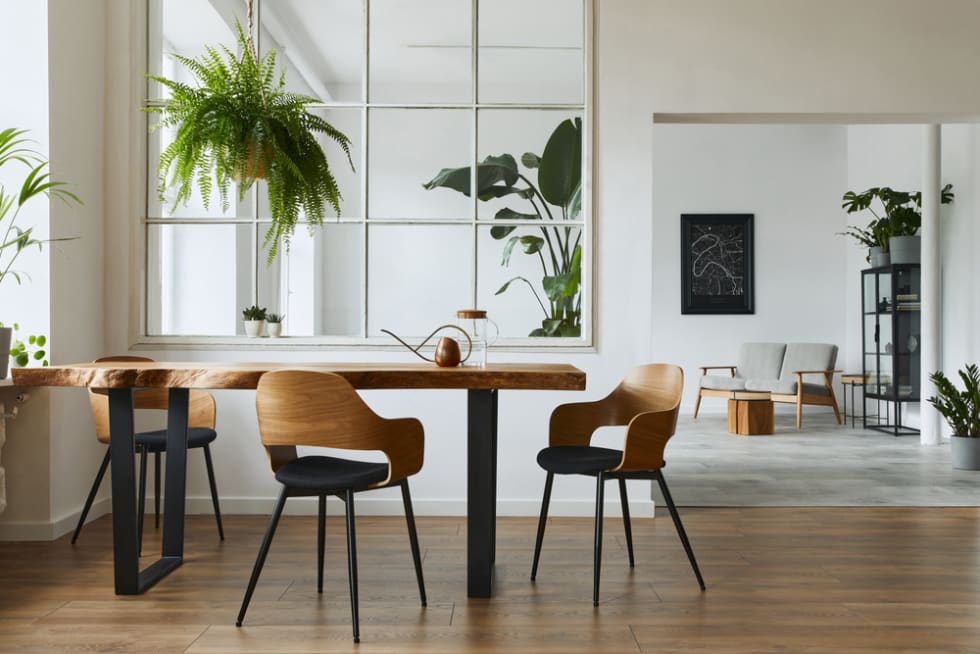
Choose your first plants based on the positioning of windows and the amount of light available in your space. Apartment garden varieties that thrive in the interior recesses require minimal light, while some demand direct sunlight for many hours a day.
Just because your apartment lacks windows doesn't mean you can't successfully garden indoors. Choose plants that are happy in low-light areas if you don’t have much natural light in your apartment. Weeping figs, peace lilies, ivy, money plants, and fittonias are a few places to start.
All of you lucky apartment owners with multiple windows and ample hours of full direct sunlight will be able to grow a wide variety of house plants such as cacti, succulents, and tropical flowers.
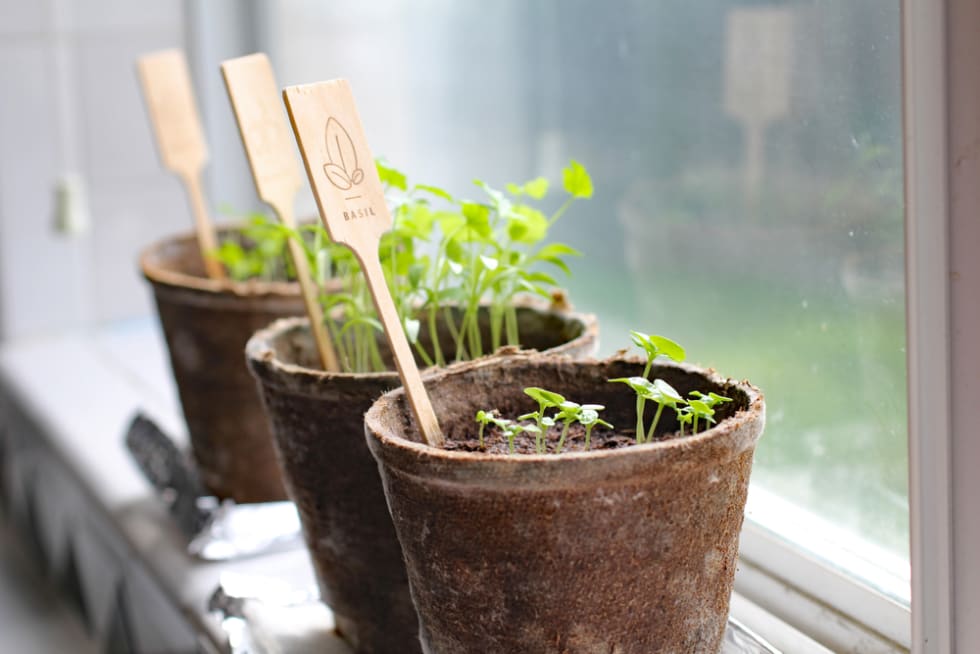
Home chefs and health-centric apartment dwellers love tending to and harvesting from indoor kitchen gardens. From artisanal lettuce to mini tomatoes, there are practically endless tasty plants to grow. Now that you have herbs within reach, don’t forget to add some flavor to your next meal. Leverage your kitchen window to grow small herbs with all of your favorite flavors to jazz up your dishes.
Flowers can add color and vibrancy to your space. Choose wildflowers and annuals such as pansies, geraniums, petunias, and begonias that will provide beautiful blooms without taking up much space.
Going vertical is key to indoor gardening in a studio or efficiency apartment. Try attaching vertical planters to the walls that allow more space to grow. Choosing slim and tall potted plant varieties will free up room as well.
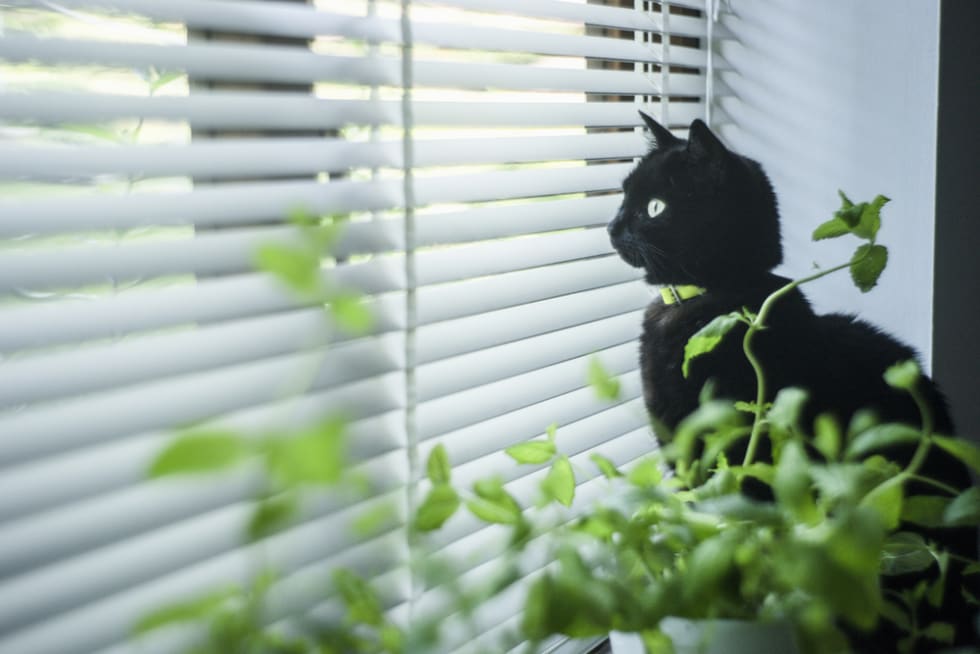
Window ledges present valuable real estate in your apartment and can be used to hold long rectangular planters and tiny pots for a window garden. It’s important to select plants that thrive in full sunlight, but make sure to turn them so they don't grow against the glass in the direction of the sunlight.
Plants can purify the air, so placing them in the most often-used rooms of your apartment could provide health benefits. Your bathroom, laundry area, or small nooks and crannies are good places to bring some fresh air and new life.
Macramé planters are functional and double as soothing apartment decor. You can even hang them in the tiniest places. Start with ivy and other vines to create an eye-catching aesthetic when cascading down the sides of the planter.
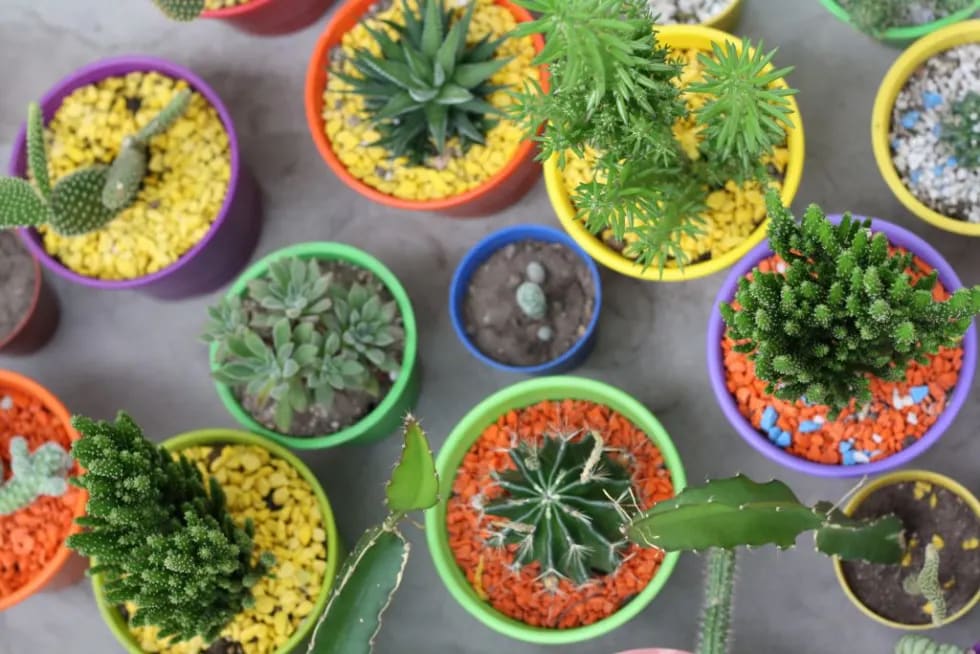
The plants you produce and the pots you choose are refreshing ways to add pops of playful color. Look for vibrant-hued planters in a variety of shapes and textures, and mix and match for an energetic display you and your plants will love.
There is no end to the creative and unique planters available, allowing you to show off your quirky side. A throw-back favorite has always been the Chia Pet and all of its variations, but there are also loads of other playful planters available in-store and online. Yes, there's even a Baby Yoda Chia Pet to make sure the force is always with you.
Each plant has unique needs and water requirements. No matter what kinds of plants you choose to start your indoor garden, it's imperative you follow a watering schedule based on each plant's needs. When you water your plants on the same schedule, no matter the variety you have, you may end up overwatering.
Even pro gardeners consult with their plants’ care instructions provided to ensure they get the watering, soil, and sunlight requirements right. Additionally, the internet supplies unlimited information to care for your plants based on their species and your climate.
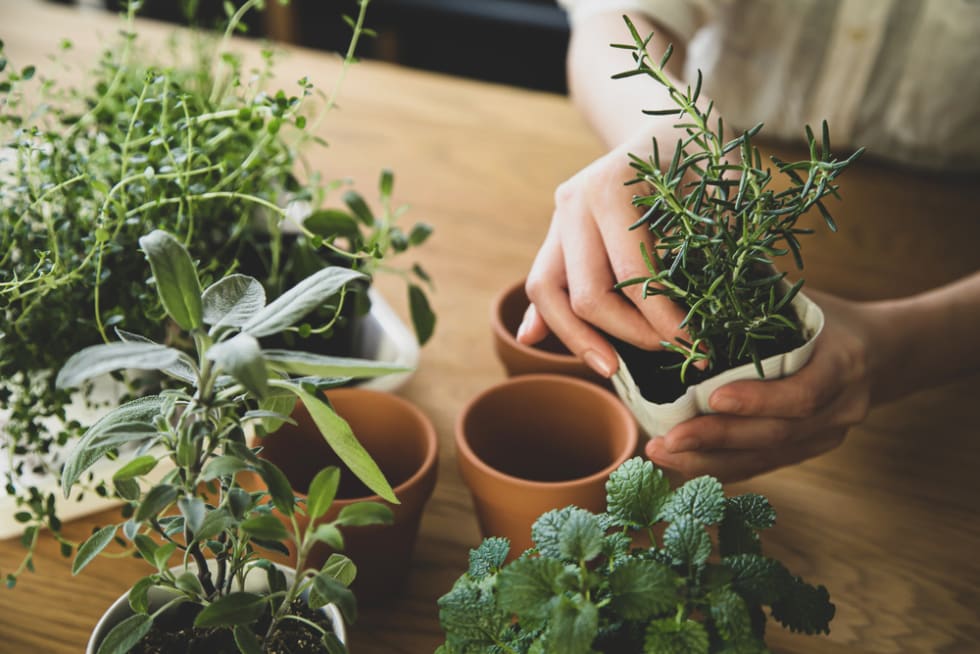
Soil type is essential for plant health and growth. Many plants prefer a higher acidic to neutral soil with a 7.0 pH level or above. Add fertilizer in potted plants, but don’t overdo it by adding in regular potting soil to keep it balanced. You can add a single layer of rocks to the bottom of the planter to avoid drainage blockage from compacted soil.
Most plants require drainage holes in the bottom of a pot or planter to stay healthy, but if you have a favorite that doesn’t have one, you can still use them for Oleander and Snake Plants.
Today's gardening tools are too handy, efficient, and stylish to pass up for bargain-basement varieties. Choose your gardening tools based on your level of experience from beginner to expert. At a minimum, you'll need some gloves, a garden fork or hand cultivator, a trowel, pruning shears, a utility bucket, and suitable planters that suit the space in your apartment.
Portable greenhouses aren't solely for balconies and rooftop terraces. They can also be used in an apartment with a low humidity environment to help plants flourish. Some plants grow better in high to medium humidity conditions, such as dracaena, begonias, and ferns.

Turn your entire wall into a green oasis! Green walls, otherwise known as living walls, are vertical gardens attached to a wall. You'll need a water source, a draining area, and plenty of sunlight to grow a living wall. Make sure your landlord is okay with the new addition, and ensure you treat your walls properly before getting started. Learn more about how to create a living wall here.
With the right plants, pots, and foliage, you have unique apartment decor. A few places to start are strategically hanging plants along with your windows or lining up colorful pots on your mantel or shelf. Hanging your plants from your wall and placing an antique frame around it creates a living piece of art and conversation starter for your apartment.
Creating a garden in your apartment doesn't need to be expensive. Some plants, including broccoli, can grow from leftover food and discarded greens. If you're on a tight budget, collect some wildflowers from the outdoors and grab a bag of soil from The Dollar Tree. Sourcing free, wooden crates from grocery stores or nurseries quickly transform into gardening boxes for free.
Physicians and pharmacists initially used apothecary tables to store medicine. Today, these tables can be used as a sock and undergarment drawer, a place to keep makeup and bathroom items, and a spot for hats, gloves, and other small items. You can also repurpose an apothecary table as an indoor garden planter. Place small bins or planters in the drawers for added protection, then arrange succulents and any lightweight, small plants for a creative apartment garden.
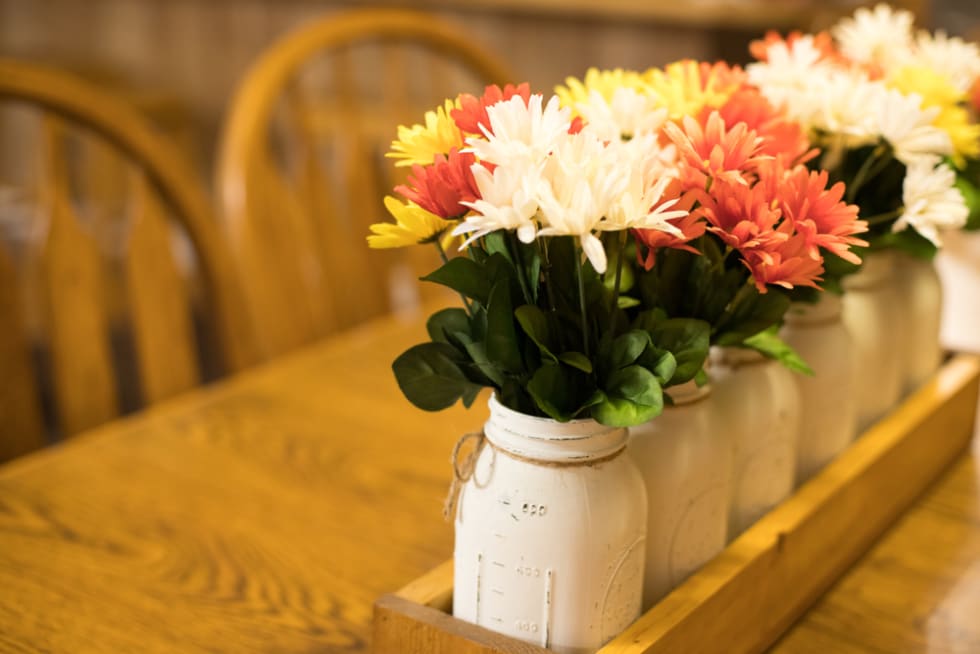
Mason jars are an inexpensive and stylish way to show off your green thumb. Herbs like parsley, lavender, thyme, and basil usually work best in mason jars. Keep them in the kitchen and reach for a few sprigs of parsley when you cook. Other options include cactus and Watch Chain Plant or House Holly Fern to tuck inside painted or colored mason jars for a touch of creative flair.
A leaning ladder bookcase or plant ladder stands showcase your plants and can be placed just about anywhere in your apartment. Keep lighter pots on top and heavy items on lower shelves to help anchor your garden in place.
A towel bar isn't just for your bathroom. Attach it to a wall in your kitchen, living area, entryway, or anywhere else in your apartment to create a tidy garden area. Hook small plant potters with the help of towel hooks and make sure they're securely in place.
A kitchen pegboard is traditionally used to hang gadgets, such as oven mitts or spatulas. Try transforming your pegboard into a makeshift vertical garden with the help of a few rods or hooks. Just hang your plants near a window and watch them flourish from your favorite room in the apartment.
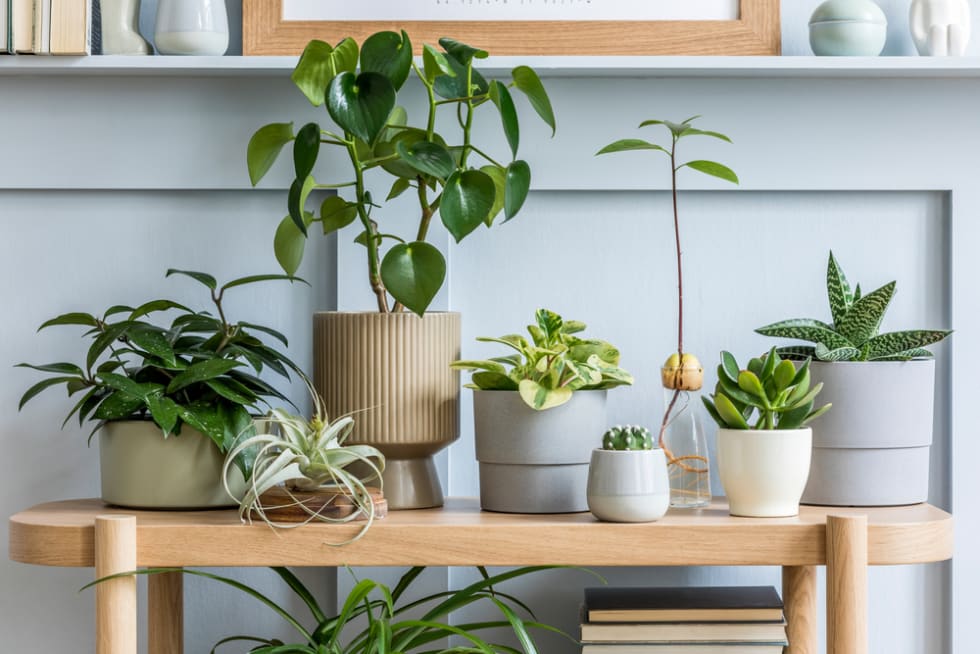
You could be missing out on valuable space around your apartment if you never look up! Check to see if there's any room above your kitchen cabinets, medicine cabinet, or even window treatments with enough surface space for a small planter or pot. Arrange your favorite greenery or colorful flowers for an elevated, eye-catching garden.
Whether you have an extra stool sitting around or want to invest in a new, colorful stool, you could use it as a plant holder. Add a few stools to your apartment, and when guests come over, you can move the plants to a table and enjoy some extra seating.
Check your lease to see if outdoor plants, flower boxes, and pots are allowed on your balcony. Once you’re in the clear, reimagine what’s possible with your balcony and create an outdoor mini apartment garden within reach. Build trellis to display your greens and lay down some artificial grass to divide up your balcony making it feel like a pint-sized. backyard space.
If you scored a garden apartment surrounded with outdoor green space, maximize what you already have and embrace your surroundings. The same tip goes if you’re surrounded by oaks, large pines, or anything else that connects you with nature. Consider potted evergreens on your balcony, Norfolk Island Pines, or bamboo.
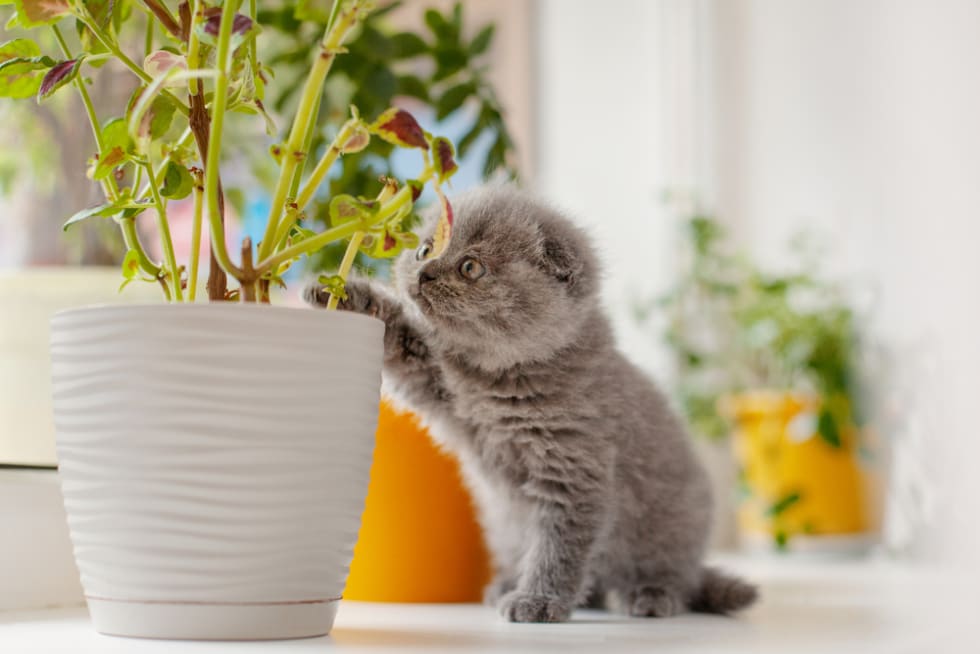
If you can’t keep your furry friends from eating your plants, design your garden around them. Cats love cat grass, catnip, lemongrass, and cat thyme for tasty treats, while pups can dig into peas, carrots, rosemary, and basil. Check with your vet in advance to make sure they’re on board with your indoor garden feast designed with pets in mind.
Rolling shelves with multiple tiers are perfect for moving your kitchen garden. You can harvest by the kitchen sink and repot and water on the patio and try rolling units with adjustable shelves to reposition as your plants grow.
Seed sheets offer beginner gardeners the chance to grow their garden from seed to full-grown plants. They often come in kits for specific purposes, such as salad, herbs, container gardens, and organic plants. The seed sheets, or pouches, safely dissolve in the water letting the underlying plants grow quickly. Watching the seedlings sprout and then eat the bounty can be highly rewarding and exciting.
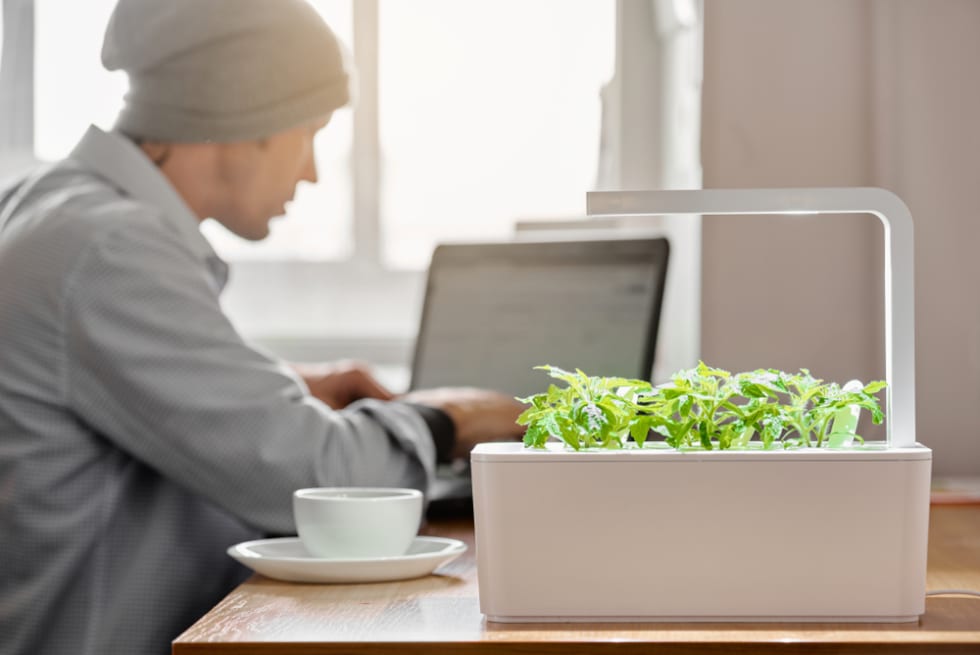
Smart gardens, such as the popular Click & Grow line, have made apartment gardening more accessible than ever before. Pairing nature with technology allows these plants to flourish from seed pod to adult plant with near-zero effort. You simply order the seed pods you would like, from herbs to tomatoes, add water and plugin, and the smart technology does the rest. Choose from a selection of garden sizes and shapes to fit your space.
Hey, subscription box lovers... great news! There are so many plant subscriptions to look into. From super greens that turn into a salad within 5 to 10 days to succulent subscriptions, there is a plan for every plant person, no matter what size apartment they live in.


In unit laundry, Patio / balcony, Granite counters, Pet friendly, Stainless steel, Walk in closets + more
In unit laundry, Patio / balcony, Hardwood floors, Dishwasher, Pet friendly, 24hr maintenance + more